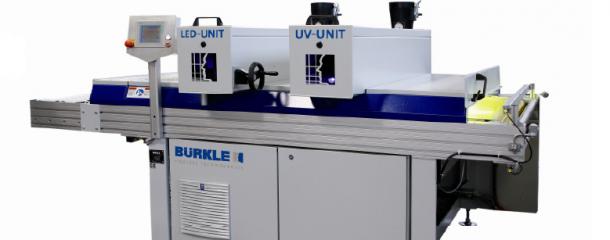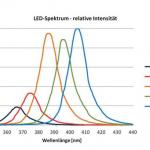LED technology
You see the entry in
       LED - Light Emitting Diodes
Purpose 1: visible light
Purpose 2: UV radiation - Tempering of coatingsThe first concepts for the use of LED technology in the surface coating of wood were developed by the company Bürkle in 2008. Meanwhile, many manufacturers that are active in the area of surface finishing offer UV-LED-systems. Hybrid-Versionen'Hybrid version' means a combination of LED radiation sources and conventional mercury and gallium lamps. Essential advantages of the LED technology in the area of wooden surfaces in comparison with conventional UV technology with for example mercury and gallium lamps:
It is obvious that manufacturers put much effort into the reduction of current limitations of application concerning the LED technology and thus try to enable new usage areas. However, the two areas adhesive processing and digital print are regarded as established. It is assumed that further application areas will follow, where the UV-LEDs can completely unfold their specific advantages (nearly monochromatic, low reactions timelow temperature). |
CNC stacionarne mašine, roboti891
Kantovanje, obrada ivica619
Testere, mašine za rezanje433
Rendisaljke, glodalice186
Glodalice, tenon rezači179
Mašine za bušenje, glodalice133
Prese, mašine za montažu203
Mašine za brušenje323
Mehanizacija, skladištenje, pakovanje194
Površinski premaz152
Proizvodne linije123
Grijanje, sušenje, sjeckanje62
Usisavanje, komprimirani zrak, vakuum136
Tehnologija montaže, radni stolovi13
Strugovi i stružnice30
Alati, tehnologija oštrenja97
Dodatna oprema, ostalo109



